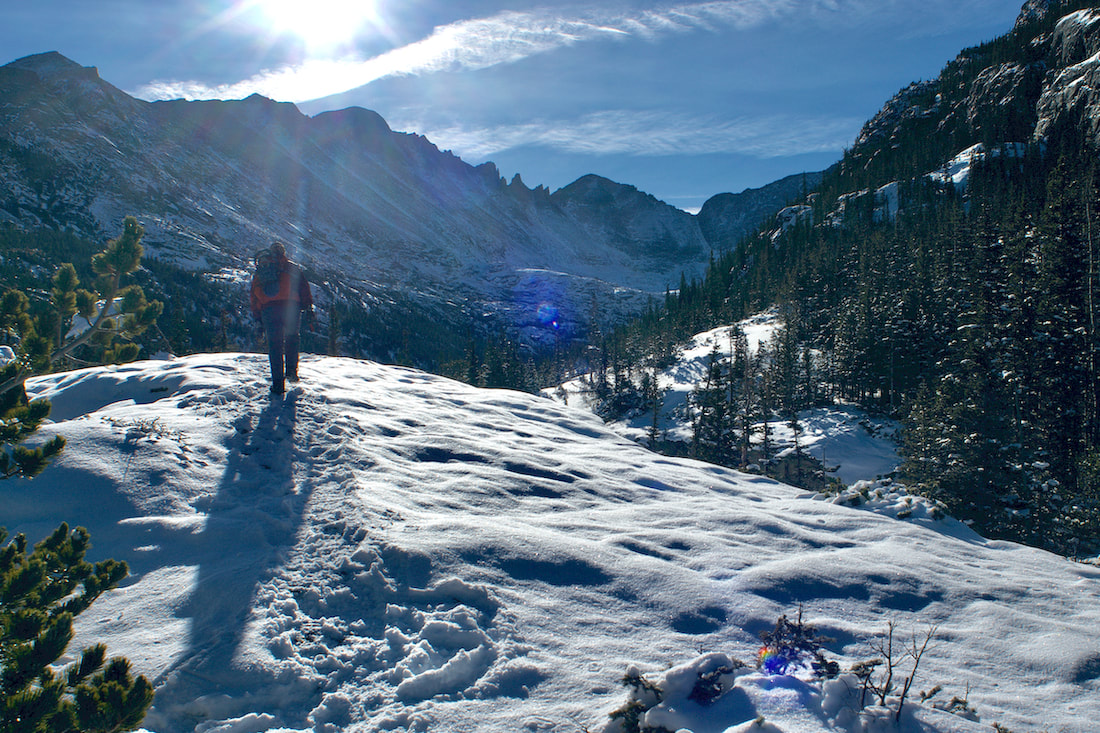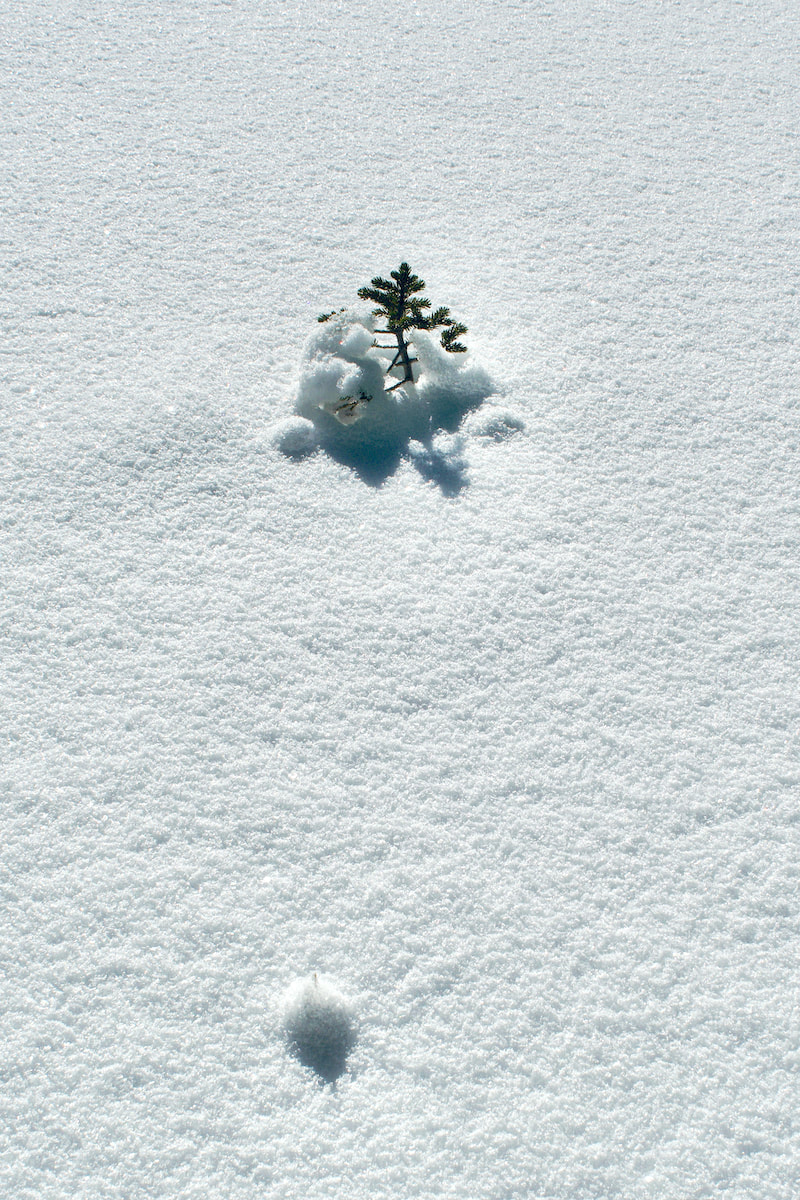|
Notes from the
Trail |
|
By Dave Rusk It was 20 days past the Winter Solstice last week when we ventured up into the Glacier Gorge area. Even though it was still 60 days until the Spring Equinox, the snowpack at the trailhead was very thin and it seemed like it wouldn't take much warmth to melt it away. But on this day, the trail was still snow covered, the skies were blue, and there was hardly a wiff of wind. The morning temperature was still cold. We quickly moved up the trail to where the mostly snowed over Icy Brook dropping out of the Loch Vale joins with Glacier Creek. The snow was deeper here where it is sun and wind protected. We climbed up out of the drainage heading toward Mills Lake. The lake was frozen solid and there was still a couple of inches of snow on the lake that had fallen a few days before. We trudged across the middle of the lake to the far end. Once at the south end of Mills Lake, we followed the short drainage that connects Mills Lake to the small Jewell Lake and crossed it. At the south end of that lake, there was an area where Glacier Creek flows into Jewel Lake where the snow did not stick, like maybe the warmth of the water melted the snow, but left these odd puff balls of large flakes. It was kind of an odd phenomenon that was hard to explain. After Jewel Lake, we returned to the trail and worked through the blowdown area from a Nov 2011 wind event and started to move into the upper part of Glacier Basin with Arrowhead appearing to the west and then finally McHenry's Peak. Once at Black Lake, also with a thin layer of of snow on it, we moved up the drainage that leads to the upper hanging valley. Part way up, now at about noon, with the sun at it's zenith for the day, we stopped for a bite to eat and take in the amazing view. The day had been warm and we were casual on our break. In the summer, there are lots of seeps, water that flows out of the cracks on down the rock face. These had turned into ice flows as the winter temperatures settled in. Up to this point, the trail to Black Lake was pretty well packed from snowshoers the previous day and shoe spikes was all that was needed for travel. But for moving into the upper basin, we decided to go with snowshoes.  We climbed up into the Upper Basin that sits at the western base of Longs Peak. There was only one set of tracks and they were several days old, someone without snowshoes. Despite being mid day, the sun sat low on the horizon and I needed to use my gloved hand to shade the camera lens. From the upper basin, McHenrys Peak and Arrowhead rise dramatically to the west and turning behind us, we could see all the way across to the Mummy Range in the north. Jet contrails were the only things breaking up the blue sky. We navigated our way through the boulder fields heading for Green Lake. There was snow coverage over the krumholtz shrubs, but grass, willows and rock cairns were poking through the thin layer of snow. The sun had now dropped behind Chiefs Head Mtn and the temperature started to drop and the downslope wind picked up. But the Key Board of the Winds rock formation continued to bask in the afternoon light. Finally at Green Lake at the base of Pagoda Mtn, we stopped for some more food and water before heading back down. We had caught a beautiful day in the Park.
1 Comment
Nora Gardner
2/1/2021 11:30:12 am
I was vicariously hiking with you on this phenomenally picturesque adventure. I have hiked to Black Lake, in the summer, but never beyond.
Reply
Leave a Reply. |
"The wild requires that we learn the terrain, nod to all the plants and animals and birds, ford the streams and cross the ridges, and tell a good story when we get back home." ~ Gary Snyder
Categories
All
“Hiking -I don’t like either the word or the thing. People ought to saunter in the mountains - not hike! Do you know the origin of the word ‘saunter?’ It’s a beautiful word. Away back in the Middle Ages people used to go on pilgrimages to the Holy Land, and when people in the villages through which they passed asked where they were going, they would reply, A la sainte terre,’ ‘To the Holy Land.’ And so they became known as sainte-terre-ers or saunterers. Now these mountains are our Holy Land, and we ought to saunter through them reverently, not ‘hike’ through them.” ~ John Muir |
© Copyright 2025 Barefoot Publications, All Rights Reserved




























